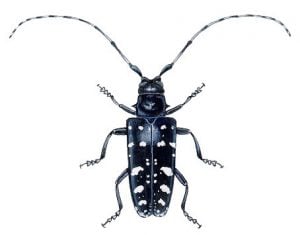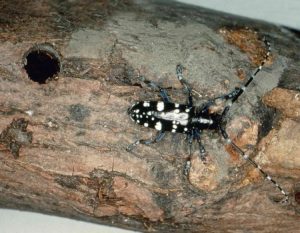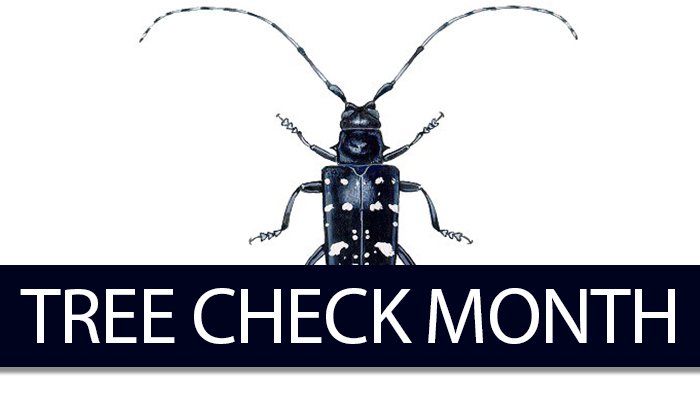The U.S Department of Agriculture’s Animal and Plant Health Inspection Service (APHIS) is reminding the public that August is Tree Check Month. August is the best time to spot round (almost drill like) holes created by the Asian longhorned beetle.
The Asian longhorned beetle is a very destructive invasive species native to Asia. It was accidentally introduced to the Unites States through wood packing materials. These pests attack a variety of hardwoods including, maples, birches, willows, elm, ash (to name a few).
Josie Ryan, APHIS’ national operations manager for the eradication program says to, “Look for round holes the size of a dime or smaller in tree trunks and branches. If you see them or black beetles that have long antennas with black and white bands, report them immediately.”
Trees that have been infested with this destructive beetle can weaken and die over time. This weakness creates potential for hazardous limbs during storms and heavy winds.
During the early stages of its influx, the beetle is slow to spread. Because of this, early detection is key, and this is why August is tree check month!
If you are unsure what an Asian longhorned beetle looks like, here are some district markings to look for:
 Very long antennae with black and white bands
Very long antennae with black and white bands- A shiny, jet-black body, about 1” to 1 ½” long, with white spots
- Six legs with possible bluish-colored feet
Signs of infestation include:
- Round exit holes, about the size of a dime or smaller, in your tree trunks and/or branches
- Shallow oval or round marks in the bark
- Material resembling sawdust on the ground around the tree or in the branches
- Dead branches or limbs falling from an otherwise healthy-looking tree
The New York State Department of Environmental Conservation is asking pool owners (now until August 30th) to also check pool filters for remnants of the beetle.
 If you suspect you may have seen one (or several) Asian longhorned beetle(s), make sure to take a photo so you can show the professionals. Also, if you can capture the bug and freeze it, this will help in easier identification. You can report your findings at www.asianlonghornedbeetle.com.
If you suspect you may have seen one (or several) Asian longhorned beetle(s), make sure to take a photo so you can show the professionals. Also, if you can capture the bug and freeze it, this will help in easier identification. You can report your findings at www.asianlonghornedbeetle.com.
It is important to be sure not to move firewood from quarantined areas because the beetle can be hidden inside, and then transported and spread to new areas.
The majority of invasive forest pest infestations are in fact found by members of the public, making these sorts of surveys particularly crucial in protecting urban and rural forests.
Asian longhorned beetles have caused the death of hundreds of thousands of trees in New York City, Long Island, New Jersey, Chicago, Worcester, Massachusetts, and Ohio.
If you suspect you may have an Asian longhorned beetle infestation, or you see these beetles on your property at all, please call the professionals immediately. Red Cedar uses an integrated approach to managing insects and tree disease on your property, and we will take the correct steps to both manage and dispose of this invasive species.


